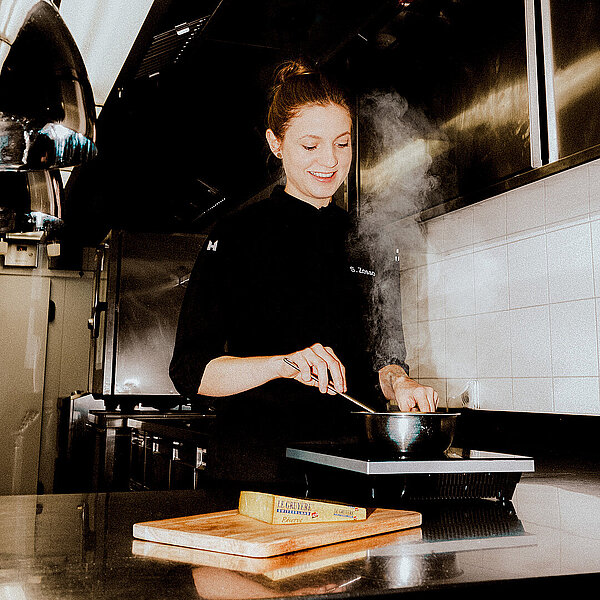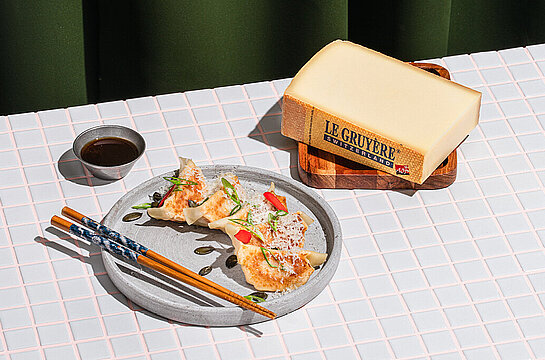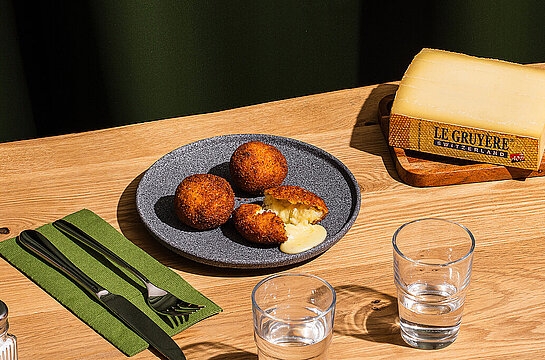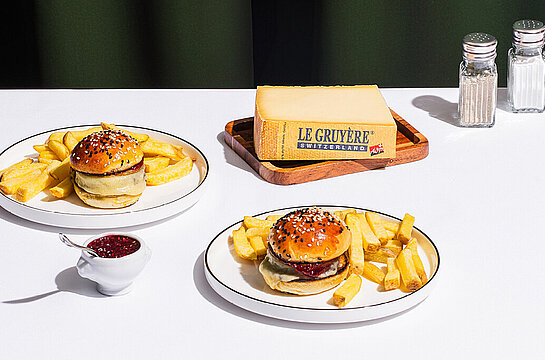Gruyère AOP mousse
- 5 min.
- 20 min.
- Starter
It was during the Renaissance period that mousses veritably made their appearance in gastronomy as we know them today and more particularly throughout the mosaic of city-states during this enlightened period which made up what is now Italy. From all around, the pastry chefs and masters queued up to improve their knowledge and to perfect creating these new textures which contrasted with the very structured cuisine put into place by, among others, the Cistercian monks. Gossipers said that the mousses had a distinct advantage in that they were easy to swallow, despite a dentition at the time that was very…sparse!
Mousses gained their gastronomical nobility only to then be rather neglected during the 17th century; perhaps a phenomenon due to trends at the time…such as a desire to discover other textures. However, thanks to the food lovers of that era, who were not necessarily cooks, but who could write well, the mousses once again became appreciated and even revered by the great chefs of the finest restaurants tirelessly roaming the world over in search of new culinary pleasures.
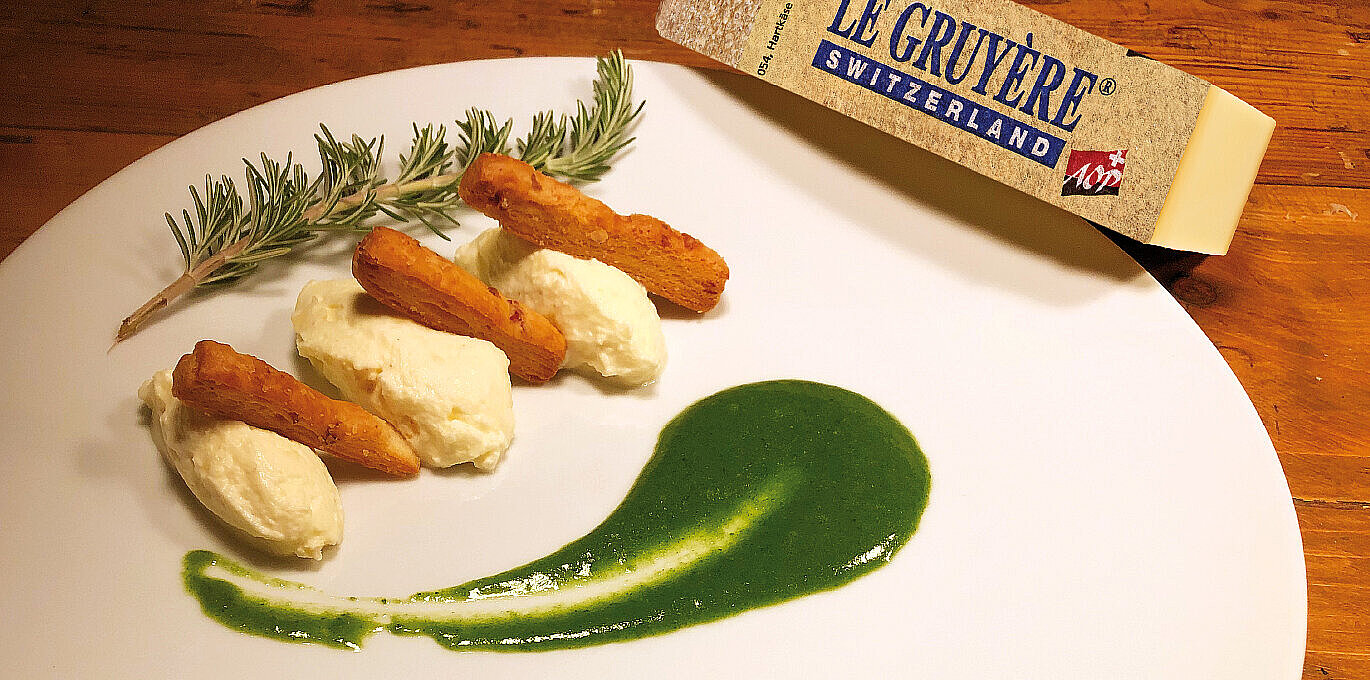
Ingredients for
Note
Attention change of number of people
-
200 gGruyère AOP grated
-
0.8 dlmilk
-
3.3 dl35% cream
-
0.05 dlcraft amber ale beer
-
0.2 dlwalnut oil
- +fresh parsley
- +salt and pepper
Preparation
ATTENTION: Make this recipe one day in advance. The mousse needs be put in the refrigerator to ‘set’.
- Grate the Gruyère AOP and set aside.
- Heat the milk and the beer and then add the Gruyère AOP. Mix them together until they are well blended. Let the mixture cool.
- Whip the cream.
- Using a rubber spatula, gently fold the cream into the mixture until well blended.
- Season with the herbs of your choice.
- While the mousse is thickening in the refrigerator, remove the stems from the parsley and rinse the leaves.
- Boil the parsley for several minutes in a pot of boiling salted water.
- Drain the parsley and then cool it rapidly in ice water to help it keep its nice, green colour! Don’t throw out the water the parsley was cooked in, but put it aside to cool.
- Place the blanched parsley leaves in a mixer or blender along with a bit of the cooled water from the cooked parsley. Blend together until it turns into a syrupy juice. Add the walnut oil and mix again. Season with salt and pepper.
- Once finished preparing, serve in ‘verrines’ or plate it up.


